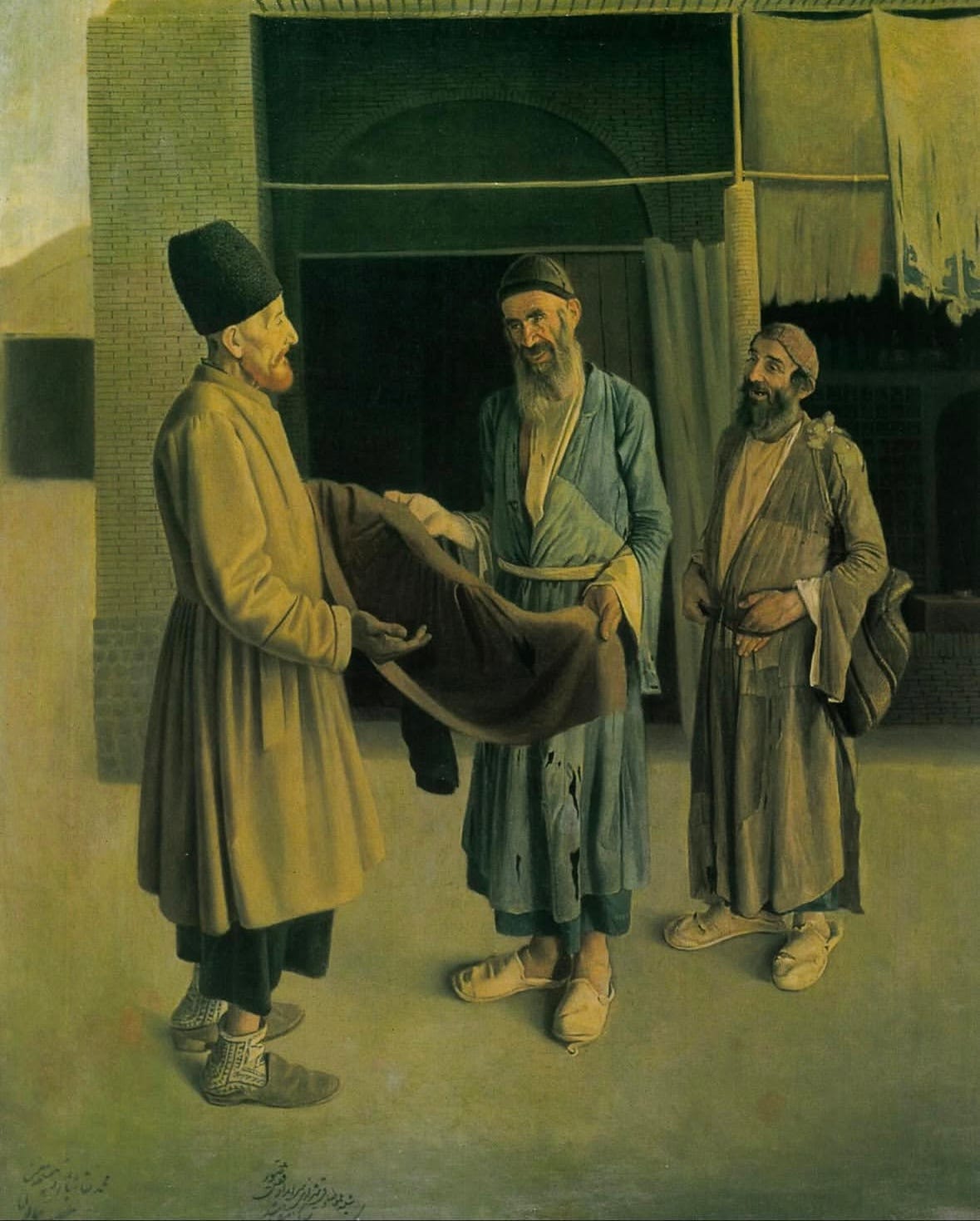Jewish dress in Qajar Iran, as seen in Kamal-ol-molk’s painting “The Merchant”
I first saw this painting featured in an essay written by Haideh Sahim in Houman Sarshar’s book, Esther’s Children. It’s used as an example to showcase the difference of dress between ethnic minorities and the Muslim majority in Iran in the Qajar era. Starting from the feet, we already can see a major difference— the Jewish peddlers are without socks and are wearing givehs(slippers). Dhimmi laws deemed it illegal for Jewish men and women to wear socks out, or proper shoes. Moving up, there’s the contrast between the crisp garment and the torn ones. The Muslim man dons a structured trouser and coat, the Jewish men wear torn qabas held together with thin pieces of fabric.
These differences seem mild when compared to the clothing regulations established in earlier periods in Iran which came about in the seventh century (Muslim conquest - the arrival of Islam). Under the rule of Shah Abbas I (1588-1629), women had to sew many bells on their chador to sound off their arrival to others; and under Shah Abbas II (1642-1666), Jews were forced to wear mismatched shoes, strings instead of belts to close their coats, and Jewish women were not allowed to cover their faces— having an uncovered face at this time was associated with immorality and impurity.
Image: “The Merchant”, Kamal-ol-molk. Oil on canvas, 1892.




